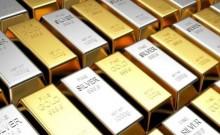
In the latest headache to the US-based pharma giant Johnson and Johnson (J&J), the Drugs Controller General of India (DCGI) has ordered the company to stop using talc raw material from its Mulund plant in Mumbai and Baddi unit in Himachal Pradesh for any production till further directions.
Reacting to the news of J&J powder containing cancer-causing asbestos, the Central Drugs Standard Control Organization (CDSCO) collected the samples from both its plants on Wednesday. Moreover, over 100 samples were also collected from wholesalers, retailers, and distributors across the country which will be further tested to check the usage of any harmful substance.
Quoting one of the CDSCO officials, news agency Press Trust of India reported that as the protocol the manufacturer was "supposed to test for absence of asbestos" for all batches of talc raw material procured. It is learned that the manufacturer is not testing for the absence of asbestos for all batches of talc raw material procured and testing them randomly."
He went on to add that "We have prohibited the company from using any raw material, including talc, for production of Johnson and Johnson baby powder till further orders. The Baddi plant has around 82,000 kilograms of talc stored, while the Mulund unit has around 200 metric tonnes." All the collected samples will now be tested at the central drug testing Laboratory.
It is to be noted that CDSCO has made a team of 100 drug inspectors for the purpose of sample collection that would be collecting samples from all brands of Johnson & Johnson talcum powder from wholesalers and distributors from 12-15 locations across the country for testing.
Notably, In a shocking investigation, Reuters examined many company memos, internal reports, and other confidential documents, as well as deposition and trial testimony and revealed that from at least from 1971 to the early 2000s, the company's raw talc and finished powders in some instances tested positive for small amounts of asbestos. Moreover, the company continued to hide the development from the regulators and public

















